


We interviewed four domain experts during the beginning phase of our research. We learned:
KEY TAKEAWAYS
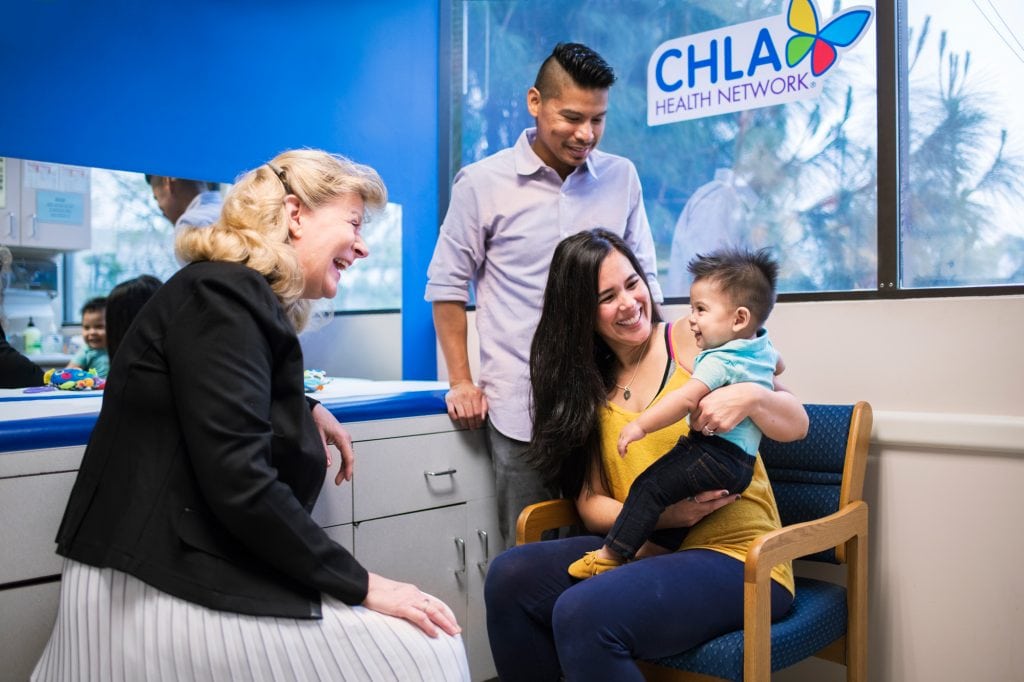

When defining our audience, we focused on the patients (Children) at CHLA as our primary audience, and parents and caretakers as our secondary audience.
We made the decision to make children our focused audience based on research around the goal of reaching parents through their children.
PAIN POINTS

Our research revealed the significance of storytelling for building common understandings.
We also discovered how healthcare can use narratives to build trust and healthcare literacy.
KEY TAKEAWAYS

“Storytelling allows hearers to reflect on the story told and actively apply it to their life situation.”
- Vivian Day, BSHCA, MHA, RN


“Digital storytelling interventions for chronic diseases, such as diabetes may be especially powerful among immigrants because often limited English proficiency minimizes access to and affects the applicability of the existing health education opportunities.”
-Stories For Change

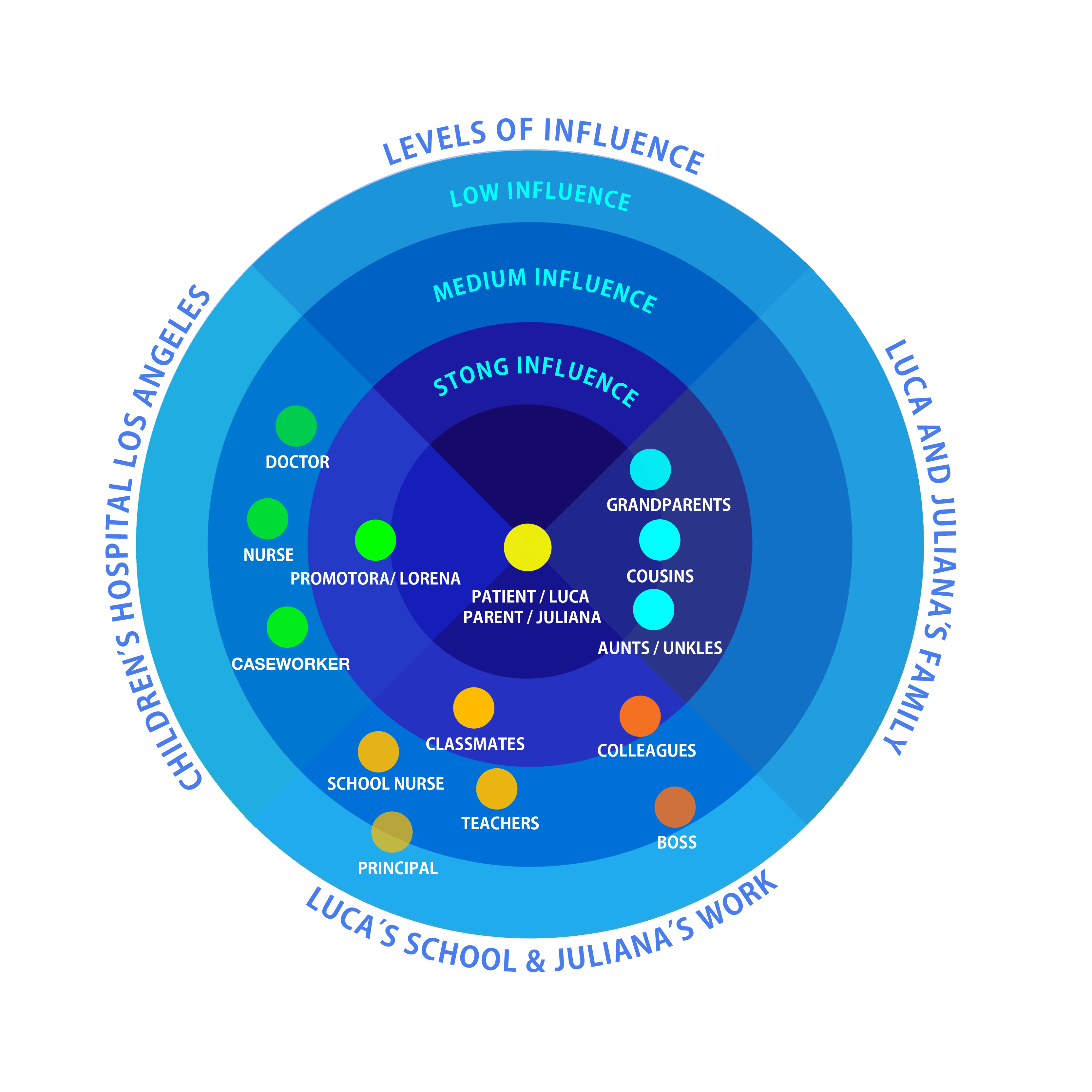
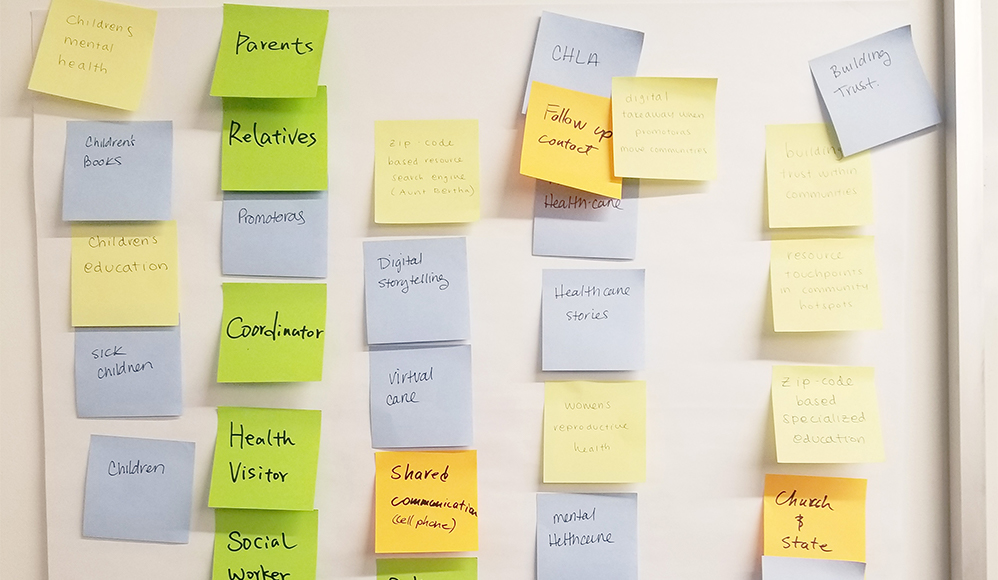
In our ideation phase we conducted brainstorming where we explored ideas around defining preventative healthcare resources, and ways to distribute them to families.
With the guidance from our CHLA stakeholders we decided to focus on the condition of type two Diabetes because of its impact on Latinx families, and because of the preventative nature of the condition.
We sketched and created stakeholder maps to represent the relationships between the patients, their family and the practitioners at CHLA.
System maps helped us to understand how the information and trust is built in current and future states.
We used journey maps to help us understand our users' emotional experience with current and future states.
We also created personas for both our primary and secondary audiences, to keep our users in mind while designing.

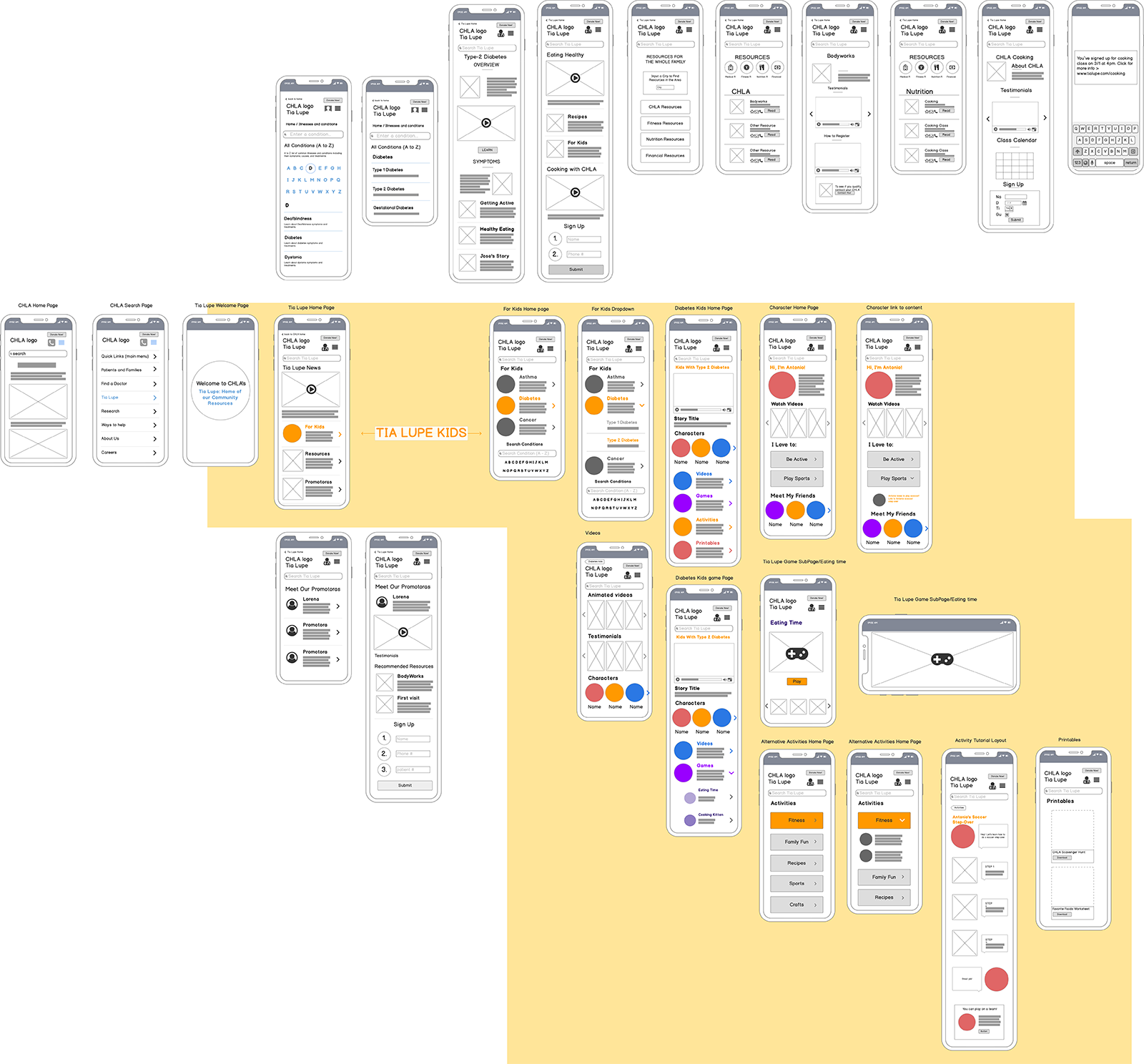
Tia Lupe is a web application that would live on the CHLA website. Dan, a software engineer, advised us against a native app because of the expense, and Ali helped us to understand the constraints of expecting our users to download the app.
With Tia Lupe being a web app, CHLA can test it gradually and it would be the most cost-effective option, compared to a native application.
By designing mobile-first, we can cater to Spanish speaking families that are likely to use smartphones as a primary technology, as Guadalupe Eton suggested.
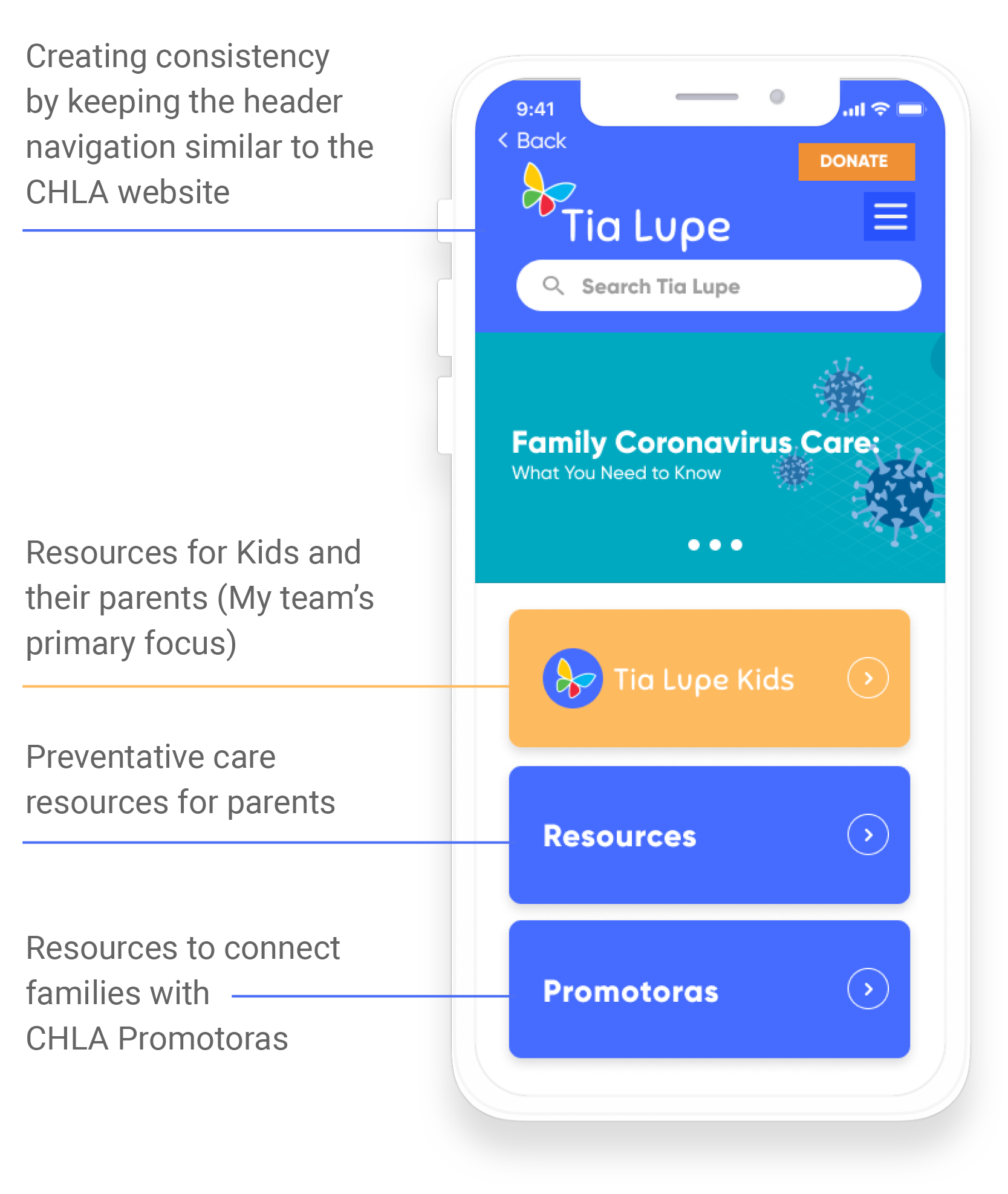



Sketching was a very valuable part of our process. This allowed us to quickly explore our ideas.
We decided that a public-facing mobile web app would be the first prototype iteration. This would keep our focus narrowed on public resources, which we believed would reach more users.
Our first wireframe prototype included resources for parents as well as a Tia Lupe kids section. After feedback from our stakeholders we decided to narrow our focus to the yellow highlighted section: Tia Lupe Kids.

The goal of our character-driven navigation is to create characters that patients and CHLA can build trusted relationships with.
These characters help users navigate resources and provide information while being delightful and easy to use.
I was very interested in how users feel about character-driven navigation and if characters can soften the stress around medical information for parents and children.
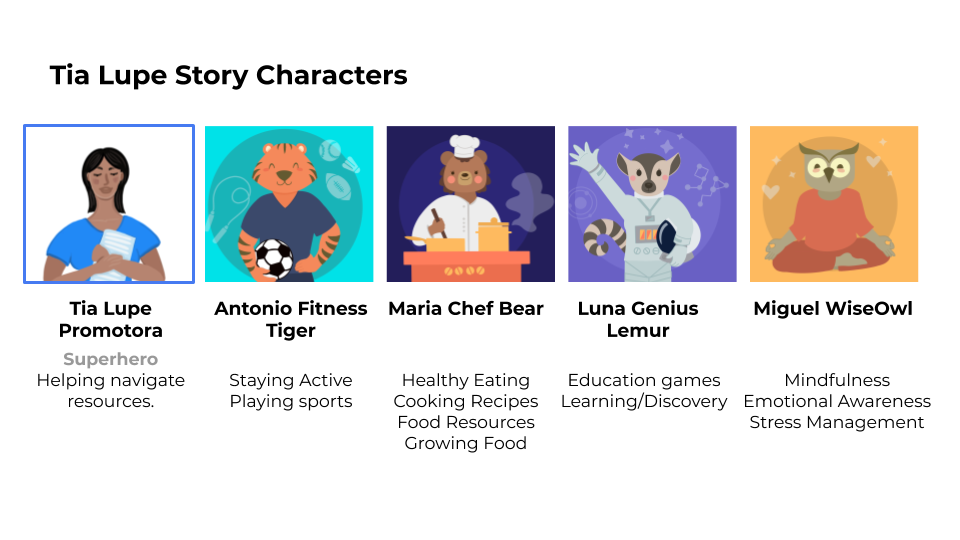

Video
The Video section of Tia Lupe has testimonials and all the videos from the app. This gives users a way to view all the videos in one place.
Gaming
Tia Lupe gaming is where users can play with educational games that build memory and fun around preventive resources.
Activities
Tia Lupe Activities section gives users a direct way to navigate the Tia Lupe resources. Here users can also find family resources and printables.


Test #1 Takeaways
Our first round of testing was with Sam, age 6. She was interested in the colors we used and characters. Sam enjoyed the food games, was able to retain the lesson, and wanted to play with the characters again in the future.
This test made it clear that we needed to create resources for children at different ages within our demographic age range. For example organizing age-related resources ages 6-9 and 8-12.
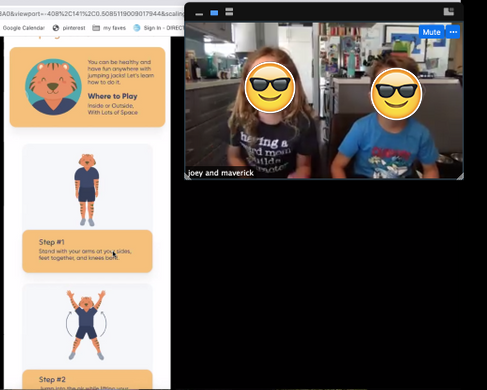
Test #2 Takeaways
The second round of testing was with Joey, 9, and Maverick, 6.
Joey had a very easy time with the content, but Maverick needed his sister’s help to read. This reaffirmed the need for age-related content.
They both liked the character and the coloring printable, and also felt that they learned about what foods have sugar from the video game “what to eat”
Our CHLA stakeholders said that our idea for Tia Lupe Kids was “right on the nose”.
The important takeaway here was that children can be the primary audience, and that Tia Lupe could be a resource for the whole family.
Teaching children could result in teaching parents as well.
Our project Tia Lupe also showed that there are ways to connect resources to parents and kids while countering the stress of the healthcare system with delight and story.